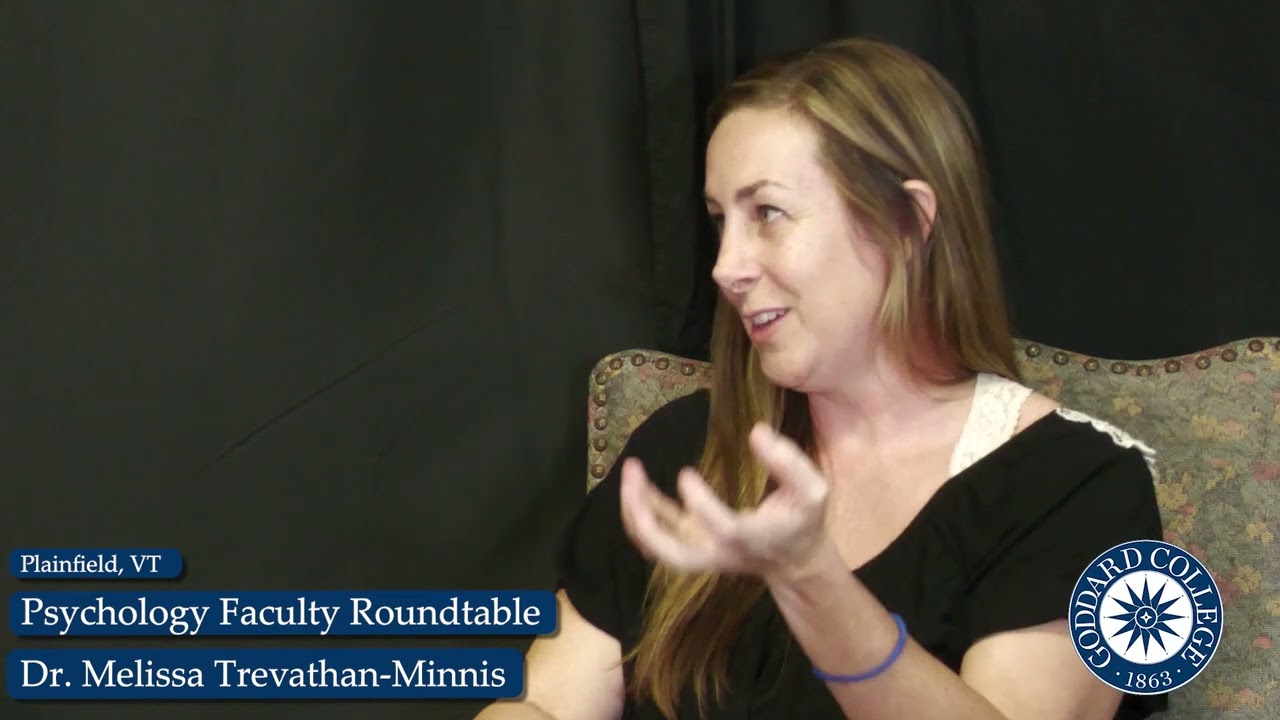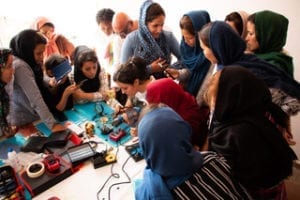
In the Psychology and Counseling Program at Goddard, we have many opportunities to share the personal Expressive Arts works that we have made. We also share, in experiences with clients, what we learn about the principles of Expressive Arts Therapy theory.
We share work in our Expressive Arts Exhibit and Opening at residencies, in our dialogues in the Expressive Arts Bulletin/Chat Board, on our Online Internship Conversation Group, and during Google Hangout Internship Supervision discussions. But how do we share our work with outside academic communities who have common interests?
Participating in professional and academic conferences is a wonderful way to share what we have learned and help make connections with like-minded psychotherapists, counselors, and researchers. For example, The American Counseling Association, The American Mental Health Counseling Association, and The American Psychology Association all have conferences. The International Expressive Arts Therapy Association, The American Art Therapy Association, and The National Coalition of Creative Arts Therapy Associations also have regional and national conferences.
At conferences, there are opportunities to share by presenting a poster or a paper, leading a workshop, joining a focus or work group, and sharing informally on a “person-to-person” level, thereby forging new relationships.
In September 2014, I presented a poster at the South American Psychoanalytic Association Conference (FEPAL) in Buenos Aires. This group is interested in art and culture as well as Psychoanalysis. It was a great experience and I enjoyed sharing with colleagues in a distant part of the world.
The poster is composed mixed media image pieces I made that were informed by Freud and Psychoanalysis. It is called “Treasures of Free Association” and in Spanish “El Tesoro de la Asocicion Libre.” I created assemblages in cigar boxes. Tobacco is a material that is important to rituals, and also is the container for the objects that were Freud’s vices.
Using a process that was informed by Freud’s ‘Free Association,’ I began with images of the hands of various people that I made with my experimental camera. I prepared the printed photographs using the silver gelatin process and, afterward, bathed them in metal based toners in an atmosphere infused with alchemy.
Afterward, I introduced the objects and pieces of vintage clothing to the boxes placing them where I felt they belonged using my intuition. When I finished, I tried to understand the works I had made using a process similar to dream interpretation.
I also presented a paper, a case study of one of my child clients. The title was: “Transference, Counter Transference, and Transitional Objects: Psychotherapy Informed by Psychoanalysis and the Expressive Arts with a Four-Year-Old Girl.” In this paper, I discussed and interpreted the drawings my client made after suffering a profound trauma. Images from the presentations are included in this blog.







